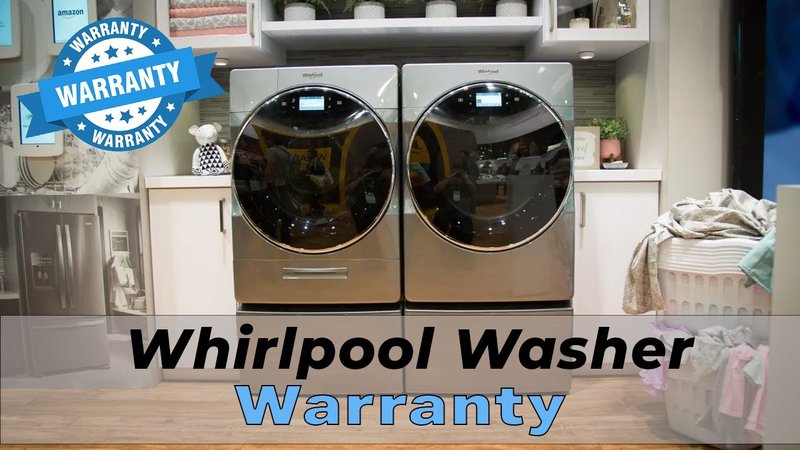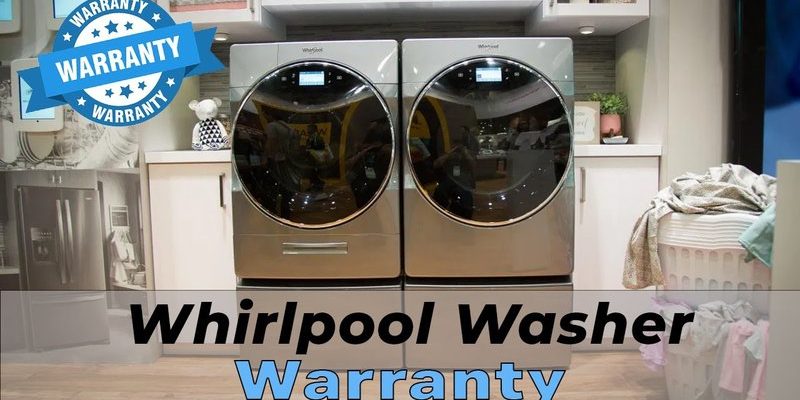
Honestly, warranties can feel like a confusing maze, especially if you’re not the original purchaser. So, can you transfer warranty on a Whirlpool laundry appliance to a new owner? Let me walk you through how these warranties generally work, what Whirlpool’s policies say, and what you should watch out for when dealing with second-hand appliances.
Understanding Whirlpool Warranties: What Are They Really For?
Before diving into whether transfer is possible, it helps to understand what a warranty actually covers. Think of a warranty as a safety net—the manufacturer’s promise to fix or replace parts if something breaks within a certain time frame. For Whirlpool laundry appliances, this usually means coverage on manufacturing defects or malfunctions during the first year or sometimes longer for certain parts.
But here’s the thing: warranties are legal agreements between the manufacturer and the original buyer. They’re designed to protect the person who bought the product brand-new, assuming that person is keeping and using the appliance themselves. When you buy a machine off someone else, you might not always get the same warranty protection, simply because the warranty doesn’t always transfer.
Does Whirlpool Allow Warranty Transfers?
You might be wondering, “Hey, can I just pass this warranty along to the next owner?” Whirlpool’s official stance is a bit strict here. In most cases, Whirlpool warranties are non-transferable. This means that the warranty is tied to the original customer’s name and proof of purchase. So, if you’re selling or buying a used Whirlpool washer or dryer, the manufacturer usually won’t honor warranty claims based on the previous owner’s paperwork.
However, there are some nuances. For example, if the appliance is still under an extended warranty or service contract purchased through a third party (like an insurance or service company), these sometimes can be transferred depending on the provider’s rules. But the basic manufacturer warranty? Generally no.
Why Doesn’t Whirlpool Transfer Warranties?
Let me explain why this is pretty normal for appliance warranties, not just Whirlpool’s. Warranties are built on trust: the manufacturer trusts that the original buyer handled the appliance according to recommended guidelines. Also, warranties often require a clear proof of purchase—usually a receipt with the buyer’s name and purchase date.
When the appliance changes hands, it’s harder for Whirlpool to verify usage history or confirm that the new owner isn’t trying to game the system. Plus, warranties have a limited lifespan. Let’s say the machine’s a year old—whether you own it or not, the warranty clock keeps ticking.
So, from Whirlpool’s perspective, warranties are designed to protect new products bought directly or from authorized dealers, not necessarily second-hand appliances sold informally.
What If The New Owner Needs Repairs? Alternatives To Warranty Transfer
Okay, say you just bought a used Whirlpool dryer and discovered a broken drum or faulty control panel. Since the warranty likely won’t transfer, what options does the new owner have?
- Out-of-pocket repairs: This is usually the default. You pay for parts and labor yourself, which can add up.
- Extended service plans: Some retailers or third parties offer service contracts you can buy separately, which cover repairs beyond manufacturer warranties.
- Contacting Whirlpool Support: Even without a transferable warranty, Whirlpool’s customer service can sometimes provide troubleshooting help and guidance on authorized repair centers.
Here’s a little tip: always ask for the appliance’s model number and serial number before buying used. These codes help you check warranty status or get repair parts if needed.
How To Check If Your Whirlpool Appliance Is Still Under Warranty
You don’t have to guess whether a Whirlpool washer or dryer is covered. Here’s a simple way to find out:
- Locate the appliance’s serial number and model number. These are usually on a sticker inside the door frame or on the back.
- Visit Whirlpool’s official website and enter these numbers in their warranty lookup tool if available.
- Contact Whirlpool customer service by phone or email, providing your appliance information and original purchase date if you have it.
If you bought the appliance second-hand and don’t have the original sales receipt, this step can be tricky. Whirlpool generally requires proof of purchase to validate warranty claims, so the lack of a receipt may prevent coverage even if the warranty period hasn’t expired.
Tips For Sellers: How To Make Your Whirlpool Appliance More Attractive
If you’re selling a Whirlpool laundry appliance, you might worry that not having a transferable warranty could scare buyers off. Here’s the honest truth: many buyers value peace of mind, so being upfront and helpful goes a long way.
- Provide all documentation: Even if the warranty isn’t transferable, giving the new owner the original manual, purchase receipt, and service records helps build trust.
- Offer a short-term personal guarantee: Some sellers offer a 30-day “buyer protection” to cover any immediate issues after purchase.
- Clean and test the appliance: Show the machine works well and has been cared for, reducing anxiety about buying used.
Remember, honesty is your best friend here. A buyer who knows exactly what’s covered (and what isn’t) is more likely to be happy with the purchase.
Understanding Warranty Limits: What’s Covered and What’s Not?
Let’s talk about what Whirlpool warranties typically cover and where they draw the line. Most standard warranties protect against factory defects but don’t cover things like:
- Damage from improper installation or use
- Issues caused by wear and tear or neglect
- Repairs from unauthorized service providers
- Cosmetic damage like scratches or dents
So, even if you could transfer the warranty, it wouldn’t cover every problem under the sun. This helps Whirlpool manage warranty claims and focus on genuine manufacturing issues.
Final Thoughts: What To Keep In Mind About Transferring Warranty On Whirlpool Laundry Appliances
So, can you transfer warranty on a Whirlpool laundry appliance to a new owner? The short answer is: usually not. Warranties are generally tied to the original purchaser and proof of purchase, and Whirlpool expects that to keep things clear and manageable.
Here’s the reality—when buying or selling used Whirlpool washers or dryers, it’s smart to set expectations about warranty coverage upfront. Check the appliance’s age, gather all paperwork, and consider purchasing additional protection plans if needed.
At the end of the day, a warranty is like a safety net but only for the person who originally bought the machine. New owners can still get help with repairs but might have to look outside the original warranty for coverage.
Understanding these details helps you make better decisions, avoid unpleasant surprises, and keep your laundry running smoothly—whether you’re the first owner or the second.
